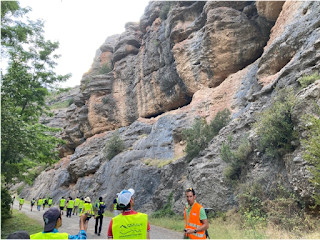ITN opportunities: Summer-schools (Part 1)

Since the beginning of the project, multiple interesting opportunities have been presented to us. We would travel each year to conferences like EGU, present and convene, introduce ourselves to the scientific community, make connections, go on different secondments according to our needs during our doctoral studies, but also opportunities to meet each other during the years, with one important meeting for everyone each year: the summer schools. It was the only time where all of us were together for multiple weeks, to exchange, learn and evolve in our respective fields, but also learn in more detail about the subjects of our colleagues. Some cooperation started between us thanks to those summer schools. To cite some, Marine and Philémon during Dragonstone, in Spain in 2021 or Amanda, Rocío, Nahin, Ariel and Marine during Inside Africa, in Namibia in 2023. Thus, it is appropriate to present, through this blog, an overview about the summer schools. We could talk about each of them for da


